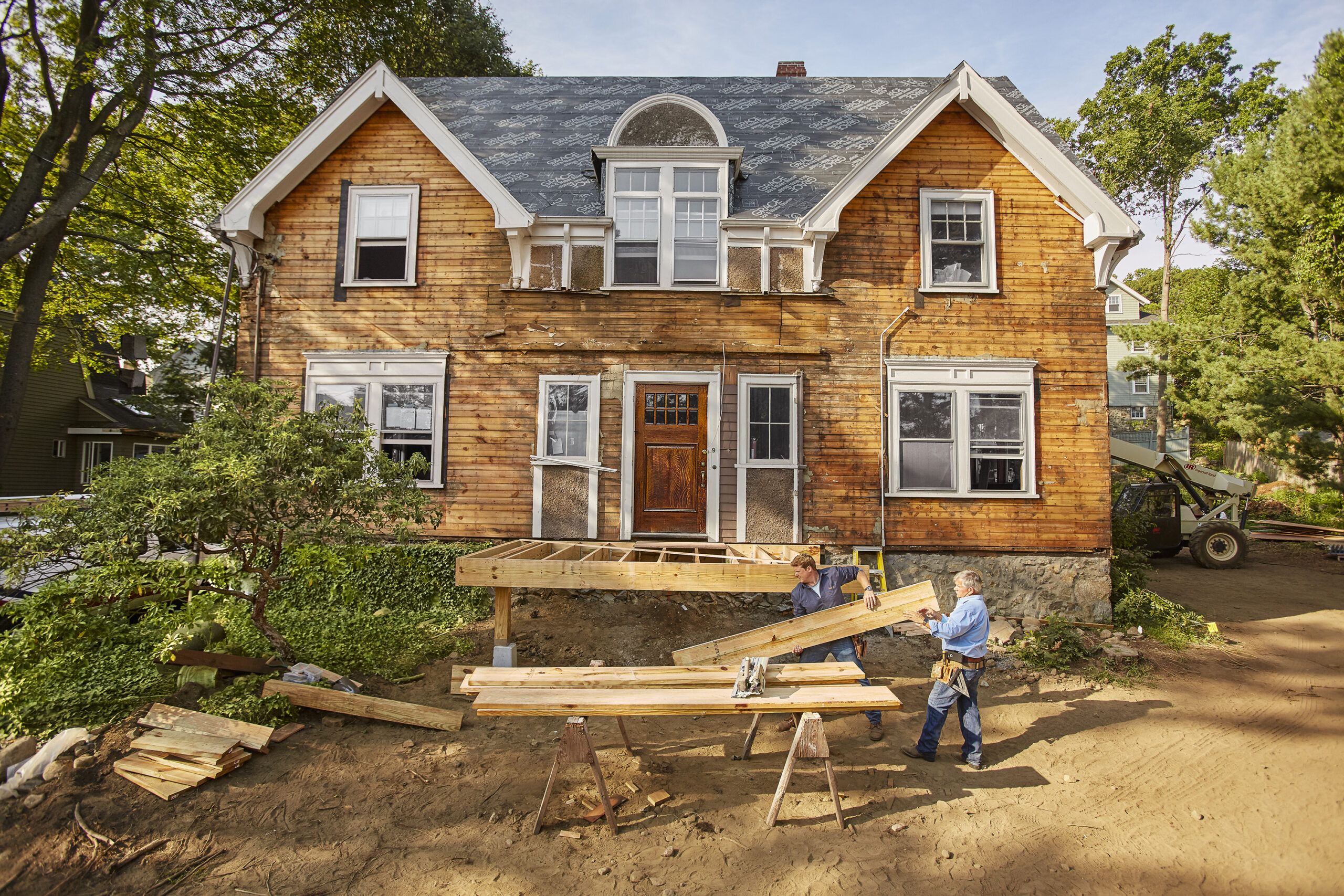New Deck in Progress: During

Before they found the home that would become this season’s This Old House television project, Emily and Nick Deldon were stuck in a vicious loop: fruitless house hunting followed by furious renovating. “We would look and look, and when we didn’t find anything that we could truly call home, we would come back and fix up another part of our house,” says Emily. That went on for 10 years.
Shown: This Old House general contractor Tom Silva and host Kevin O’Connor frame the deck for the Arlington house’s new entry porch.
Family Architectural Wish List
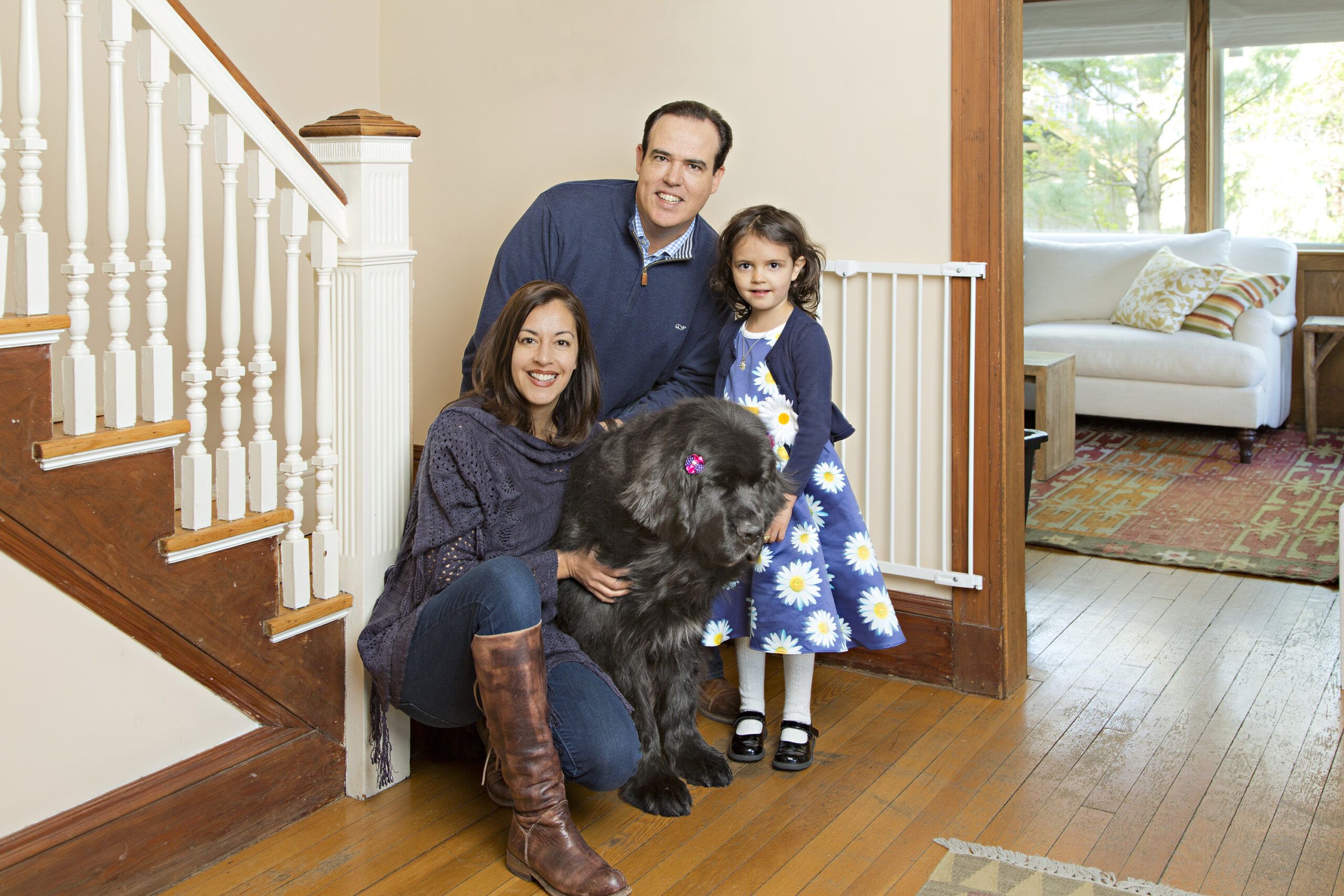
They loved living in their native Arlington, Massachusetts, and being near extended family, but no extent of renovation could give that house a yard where their daughter—not to mention their 120-pound Newfoundland—could play. Nor could it move the house farther from the busy thoroughfare out front. So the Deldons stopped waiting for houses to come on the market and started walking older neighborhoods to identify places they would buy if they ever became available. “Everything sells right away in Arlington,” says Nick. “We wanted to be ready.”
On a bright spring morning in 2013, as a Realtor led the Deldons up this house’s spongy porch steps, they already knew its square footage (2,433), its lot size (one-half acre), and its construction date (1909)—and had more than once admired its out-of-the-way location, as well as its period look, even though they couldn’t quite name it. In fact, the home hit so many of their search criteria—quiet road, architectural charm, in dire need of renovation—that it was No. 2 on their wish list.
Shown: The Deldon family wanted new shingle siding, so the crew can insulate from the outside and preserve vintage plaster and paneling on the interior.
Character Seen Pre-Reno: Before
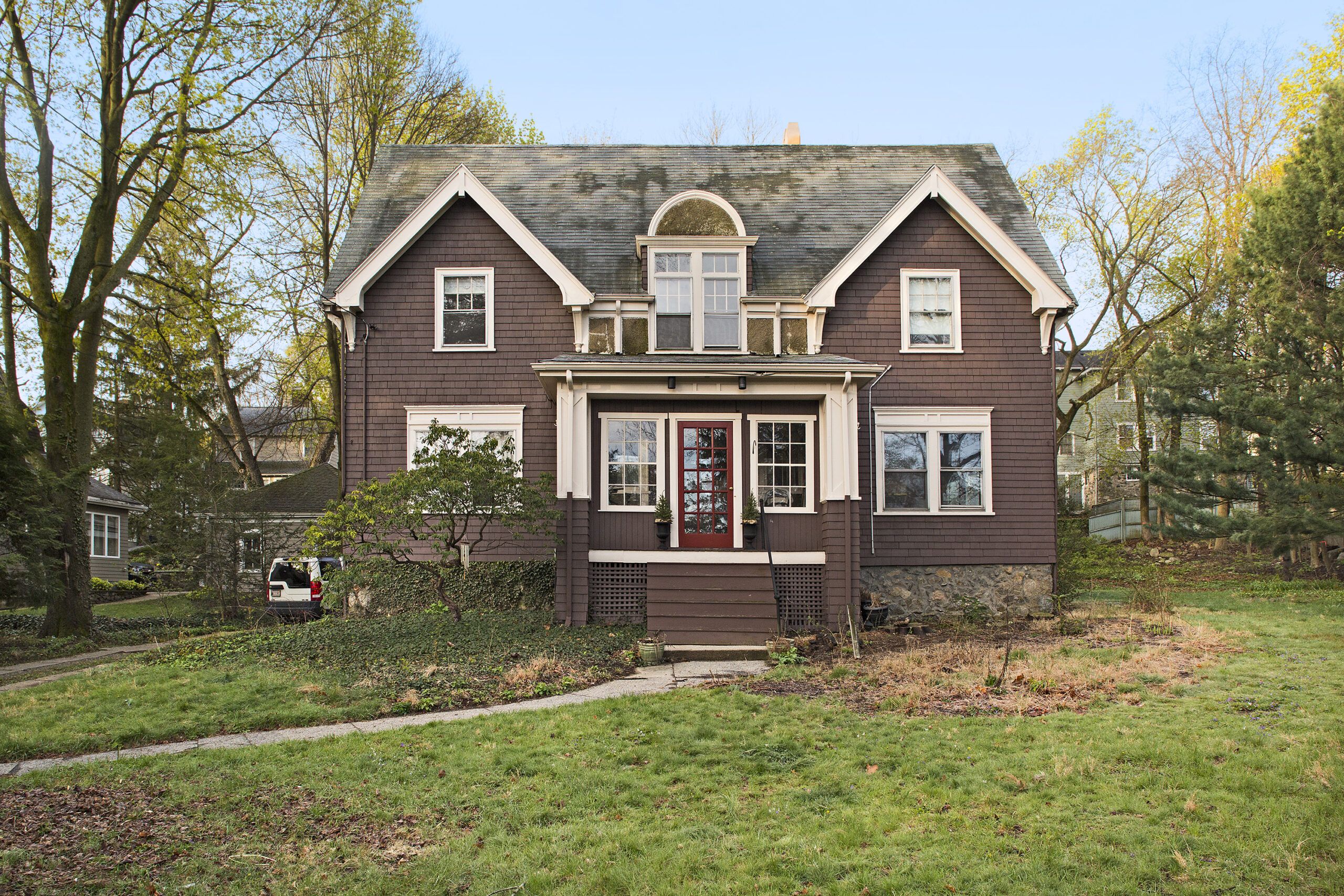
“Its steep roof and dormer have this whimsical, storybook feel,” says Emily. “And I could picture it with new shingles, shutters, and window boxes.” But as they toured the interior that morning—just hours after the house hit the MLS—she suffered a pang of doubt. It had lovely and spacious front rooms, says Emily, “but when we got to the back, we were like, ‘Where’s the rest of the house?’ ” With only a pantry-turned-galley-kitchen, the three-story building is very nearly just one room deep. That meant to get what they wanted would require a significant multistory addition.
Shown: The boxy existing porch will be replaced with a new showpiece that reflects the Arts and Crafts design of the house. Flourishes include a flared shingled base and beefy wood columns supporting a flared copper hip roof.
Handsome Rendering with a Glimpse of the Outcome

Still, as serial renovators (albeit of one house), the Deldons trusted their ability to transform the place. Before the first visit was over, as their daughter plinked away on the sellers’ upright piano, Emily and Nick met eyes and agreed—without a word—that they’d found the home they had been craving.
It would be another three years, however, before construction began. The Deldons—and several local design-build firms—were stumped by how to expand the narrow, steep-roofed house. “The contractors kept drawing different versions of boxes tacked on to the back,” says Nick.
Shown: A rendering of the Arlington house as it will look when work is completed.
Addition with Matching Rooflines
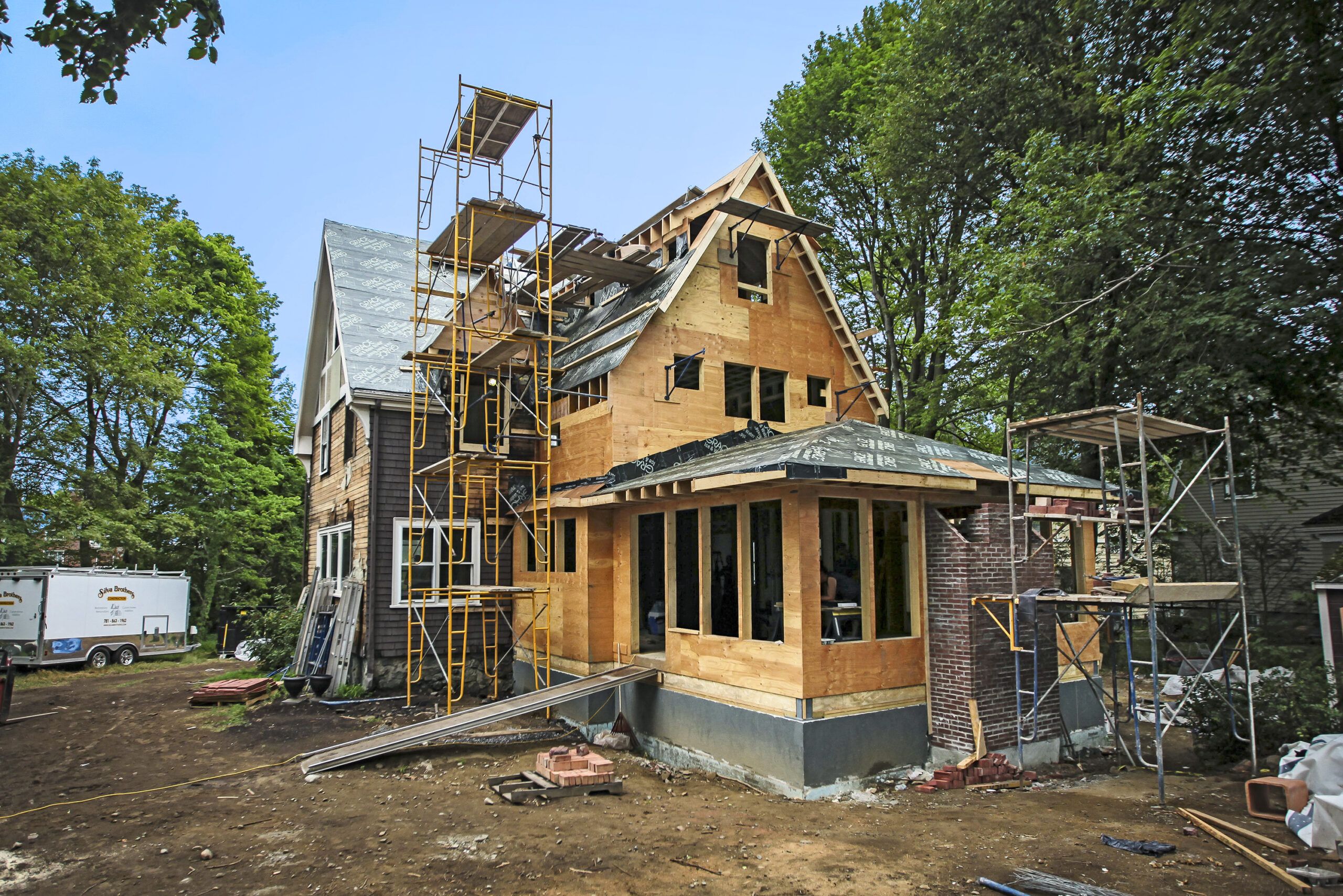
No less challenging was determining what architectural style to pursue. The building is a seeming hodgepodge: The steeply pitched roofs and the stucco and half-timbering in the gables look Tudor; the heavy quartersawn-oak front door and simple, blocky interior moldings say Craftsman; and the arch-top dormer and turned stair balusters only add to the house’s eclecticism. It wasn’t until Emily somewhat randomly Googled the name of a neighborhood street and discovered a town in England with the same name that she solved the mystery of the house style. “I started looking at photos of the area, and the houses looked a lot like ours,” she says.
“Suddenly everything became clear.” It’s an Arts and Crafts house. Although better known for its 20th-century American interpretations, such as the Craftsman and Prairie styles, the Arts and Crafts movement began in the mid-19th century in England. In 1909, when this home was built, designers in New England were taking their cues from across the pond (see “What is Arts and Crafts, Anyway?” at the end of the story).
Shown: A hip roof caps the family room extension off the three-story back addition, with the kitchen on the ground floor, master bath above, and a craft room on top. The addition’s steep gable roof matches the rooflines on the rest of the house.
Support for the First-Floor Open Plan
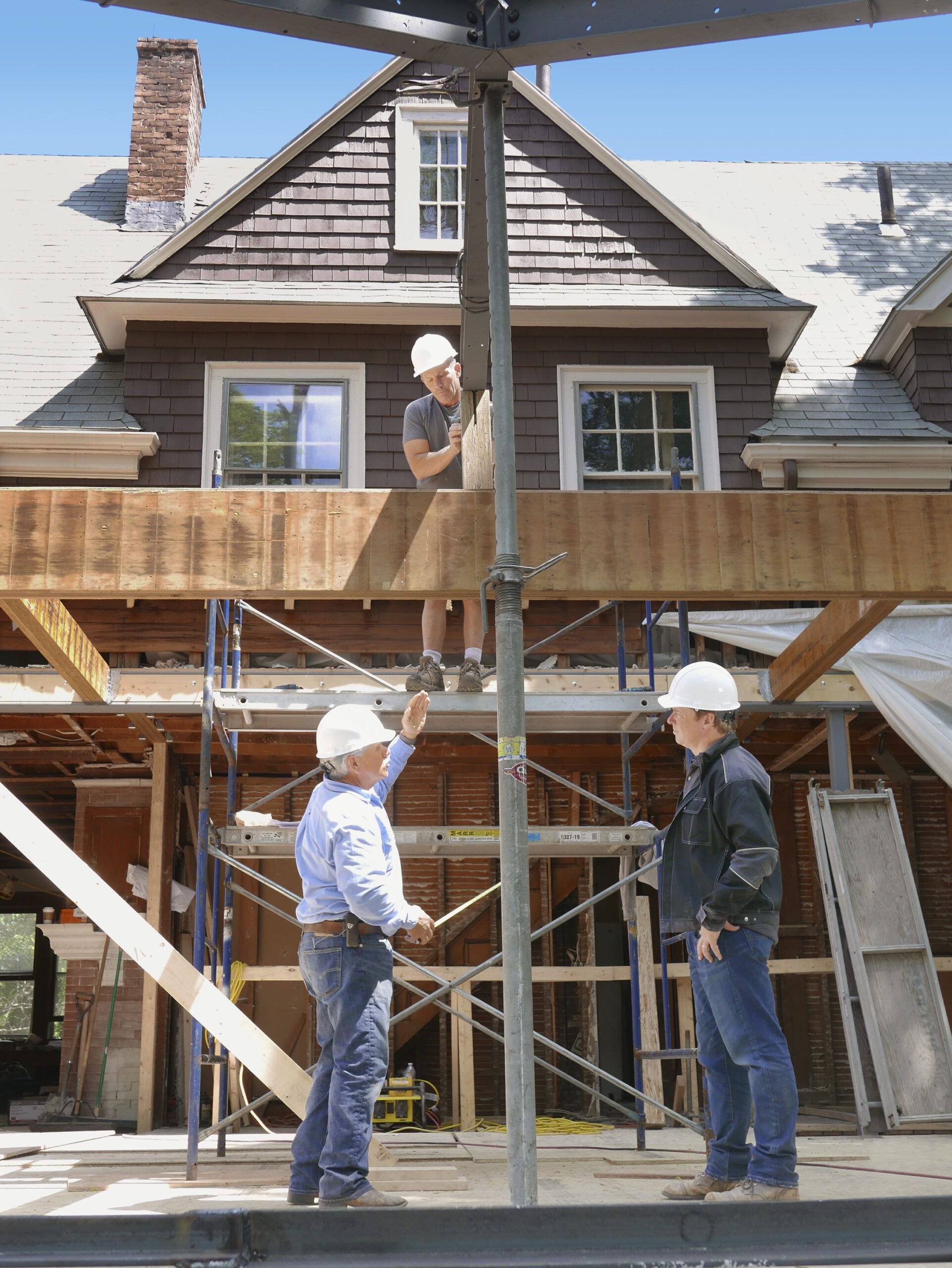
That uncommon architectural pedigree, the design challenges posed by expanding the slender and sharply roofed structure, and the project’s widely appealing scope of work all made it an ideal fit for This Old House TV. “What we look for is a great before-and-after story,” says TOH senior producer John Tomlin. “This house hasn’t been paid attention to for a long time, but it has a lot of interesting features and the homeowners have a lot of interesting plans.”
Tom Silva is already at work on a three-story back addition, with a new kitchen, powder room, laundry, and family room on the first level; a master bath on the smaller second; and a craft room on the still-smaller third. Most of the new space will be tucked under a steep gabled roofline that will echo the house’s 18/12 pitch, says Tom. The family room and entry porch will be capped with gently sloped hip roofs. New shingle siding and roof brackets will enhance the Arts and Crafts feel, and the back addition’s insulating-concrete-form foundation will get a “splash stucco” finish that picks up the stucco in the original half-timbered gables: “You throw it up with a brush to get that dimpled look,” Tom says.
Shown: A hefty network of engineered beams, tied to a wood-clad I-beam where the house’s back wall had stood, makes possible the open plan of the first-floor kitchen and family room. It will also support the steel framing for the family room’s hip roof.
Rebuilding a Chimney Fit for an Arts and Crafts-Style House

In keeping with the Arts and Crafts ethos, the Deldons plan to use natural materials throughout the new spaces, including marble kitchen counters, exposed-wood beams, and a wood-clad ceiling in the family room. They aren’t sticking 100 percent to architectural purity, however. For example, to keep the interior bright, they are having the new kitchen cabinetry and the wall paneling in the living room painted white. “Dark wood is traditional for these houses,” Emily says, “but we’ll bring that in with our furniture.”
Shown: Mason Mark McCullough rebuilds the existing chimney and extends its height, preparing the top for a corbeled cap. In keeping with the Arts and Crafts style of the house, there will be prominent chimneys on both the main house and the single-story family room extension.
Rafters for the Rebuilt Front-Porch Roof
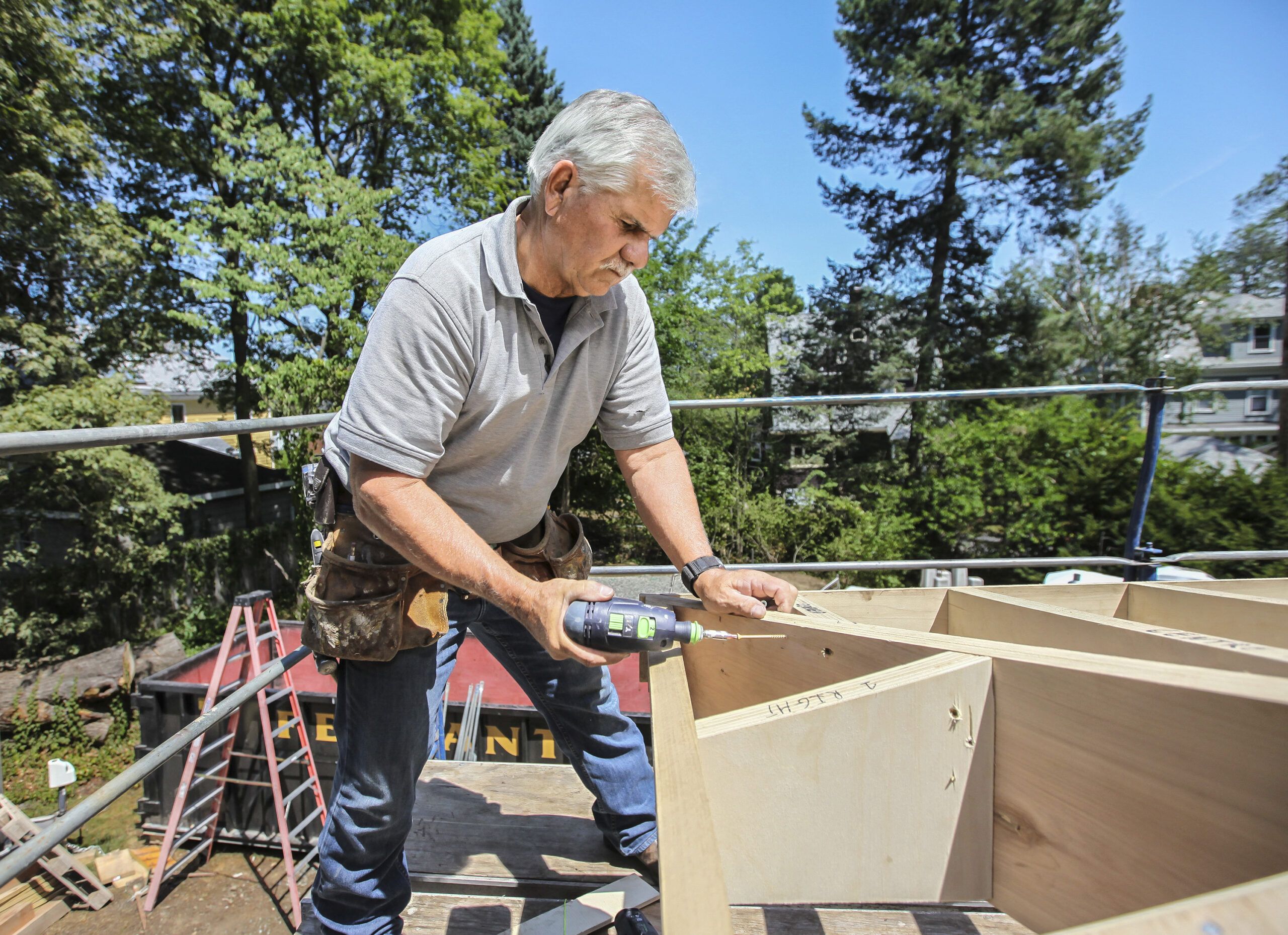
In another nod to contemporary design, the new kitchen and family room will be open plan, thanks to a network of hidden beams, the largest of which will be a 28-foot-long, 10-inch-high, thousand-pound steel I-beam replacing the original rear wall. But none of those grand front rooms—the living room, dining room, and foyer—will suffer any demolition. That’s possible because all of the house’s “wet rooms”—kitchen, laundry, and bathrooms—will live in the addition, so TOH plumbing and heating expert Richard Trethewey can run the rough plumbing through the newly constructed space.
Shown: Tom installs the jack rafters for the rebuilt front porch’s flared hip roof.
Making Room for Angle Irons for Floor Support
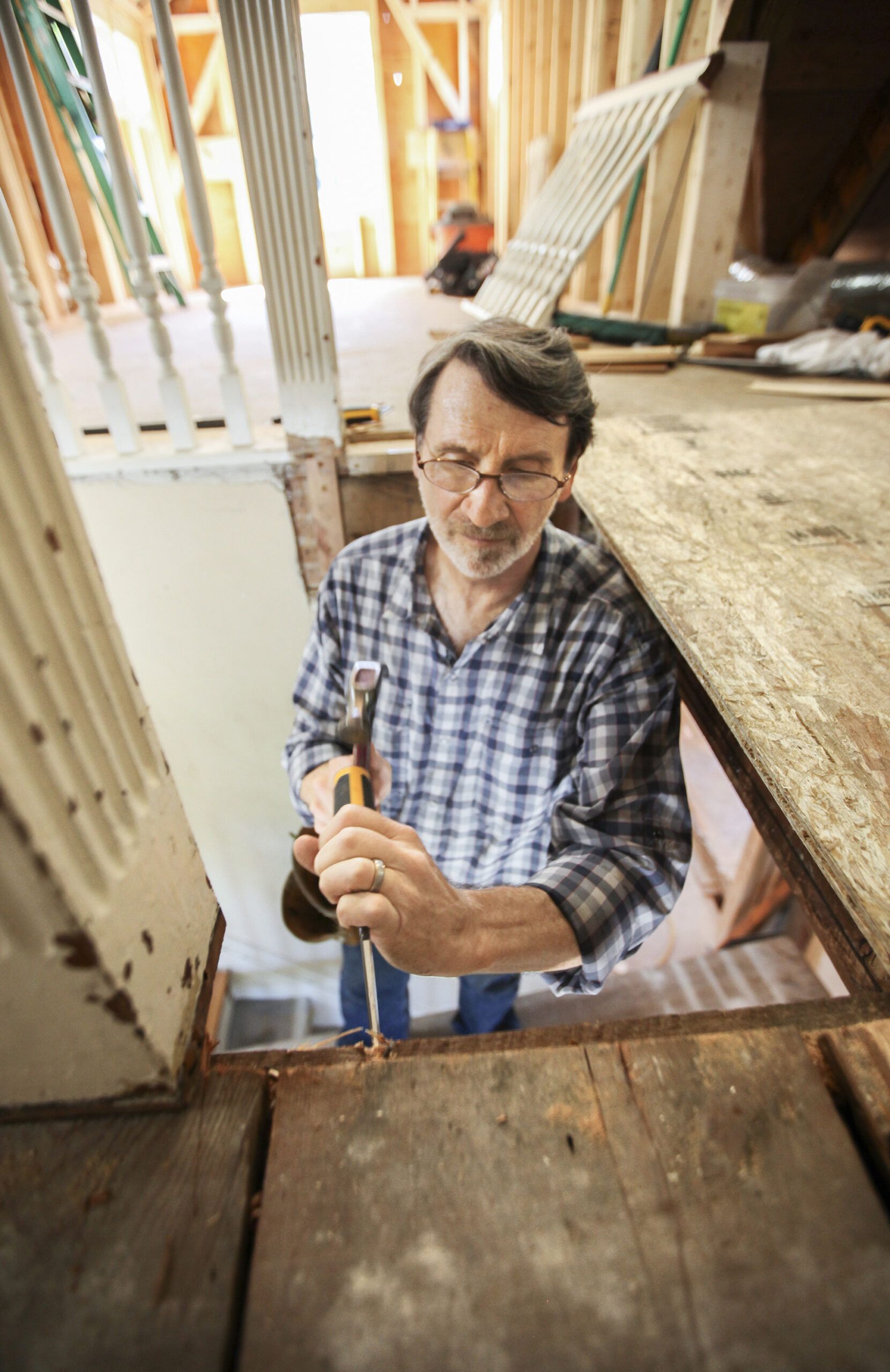
That punky front porch, on the other hand, is unsalvageable. “It has been drastically altered over the years anyway,” says Norm, “and makes the whole house look a bit off.” The TOH team will build a showpiece replacement featuring a hip roof and shingled columns. Says Norm, “The porch needs to tie the house’s architecture together and make it welcoming.” It promises to be much more so than when the Deldons first climbed those steps.
Shown: To accommodate renovations on the top floor, Norm chisels out pockets for angle irons that will help support a new section of flooring.
Floor Plans
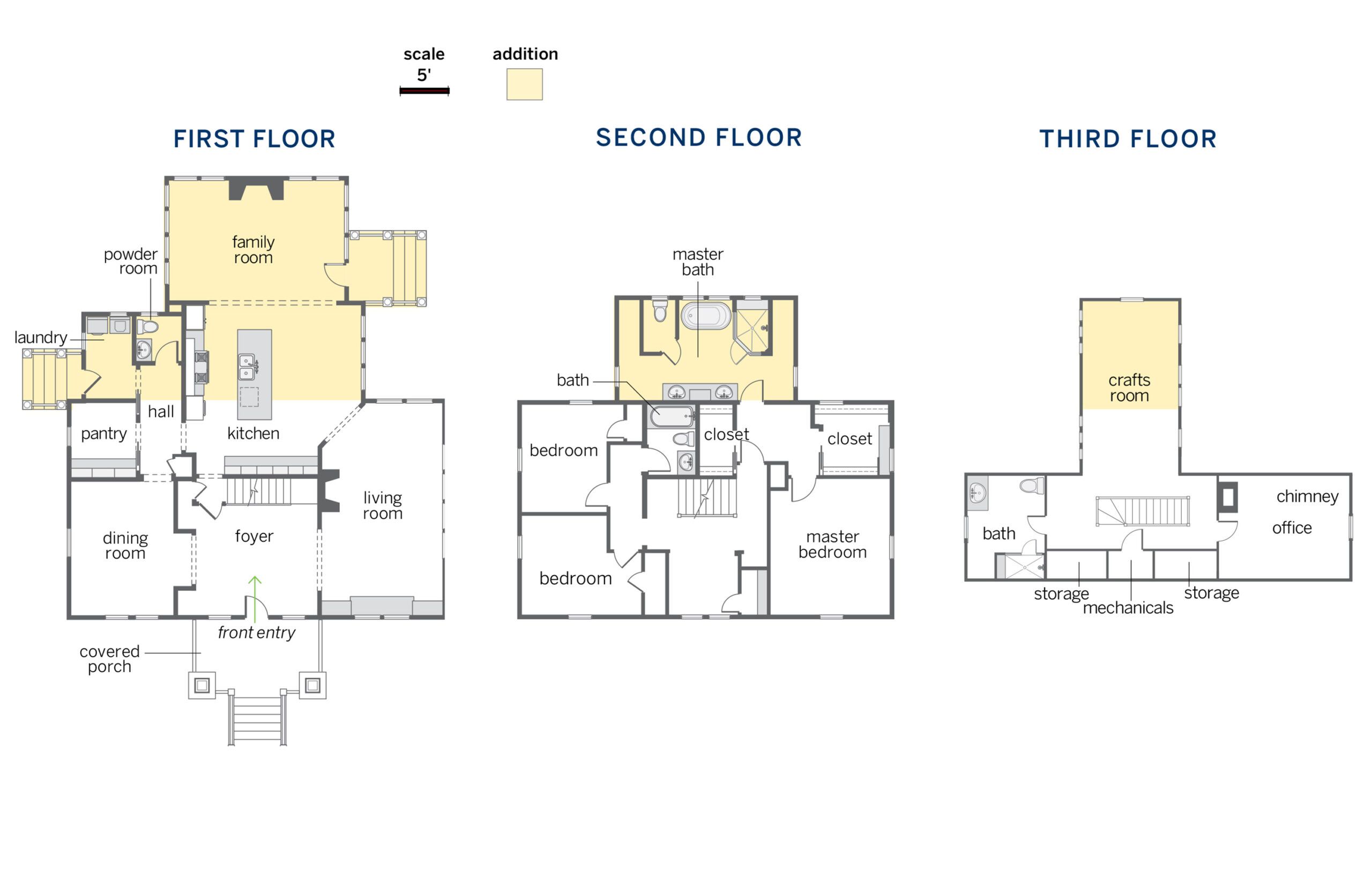
Renovations to the existing 2,433-square-foot house will include rebuillding the entry porch and creating an 805-square-foot multistory addition in back, allowing for a big, open-plan kitchen and family room on the first floor, a master bath upstairs, and a craft room on the third floor, as well as a finished basement (not shown). A laundry and powder room will also be added on the first floor; the front rooms will stay as is, as will the second-floor bedrooms.
What is Arts and Crafts, Anyway?
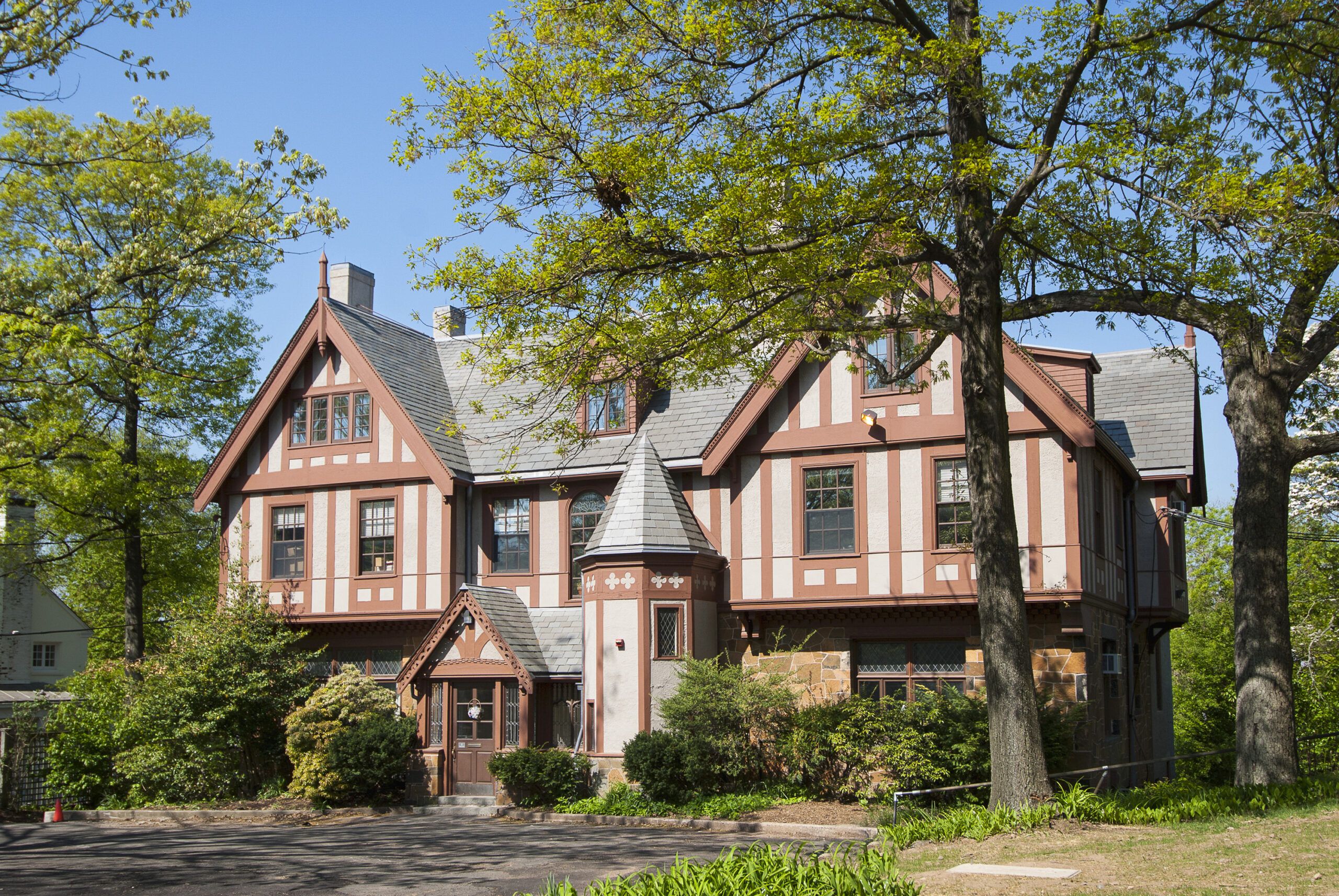
Think Arts and Crafts, and you probably picture a 1920s California bungalow loaded with Stickley furniture. But Arts and Crafts isn’t just a house style.
“It was a movement—in art, architecture, furniture, politics—that began in England in the mid-19th century, and pushed back against the brutal working conditions in factories at that time,” says architectural historian Maureen Meister, author of Arts & Crafts Architecture: History and Heritage in New England. “Arts and Crafts leaders rejected mass production and celebrated handcraftsmanship.”
For home designers, that meant rebelling against the excessive ornamentation of the Victorian era, which they viewed as factory-made junk. They looked back to the preindustrial period of the Middle Ages and Renaissance for their design inspiration. And that’s why Arts and Crafts houses in America more resemble those in England, with elements of what we consider Tudor and Gothic architecture—and why the Arlington house falls within the Arts and Crafts style.
Shown: Like the Arlington project, this circa-1895 Arts and Crafts house in New Haven, Connecticut, incorporates half-timbering, steep gables, and other Tudor and Gothic architectural motifs.
